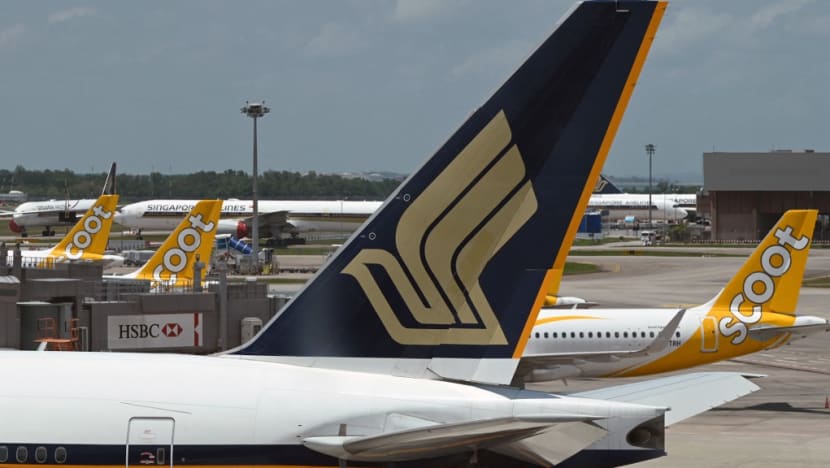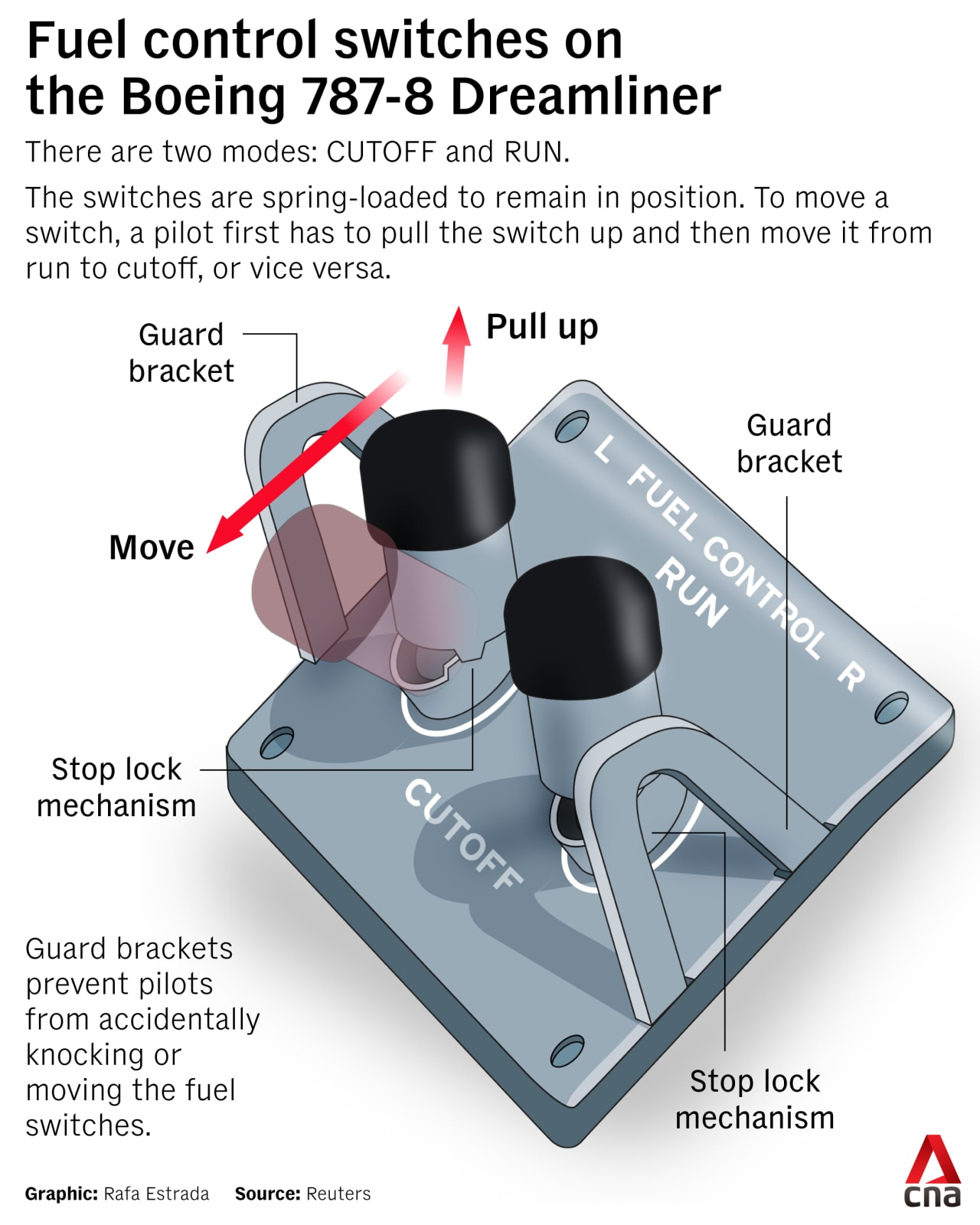Airlines including SIA check Boeing fuel switches after Air India crash
Fuel switches of the Boeing 787 Dreamliner have come under scrutiny after a preliminary crash report on last month's Air India crash.


This audio is generated by an AI tool.
SINGAPORE: All fuel switches on the Boeing 787 aircraft under Singapore Airlines (SIA) and Scoot are functioning properly and comply with regulatory requirements, SIA said on Tuesday (Jul 15) following checks conducted on the system.
India, South Korea and Japan had reported similar moves after a preliminary report on last month's Air India crash showed that the controls of the Boeing 787 Dreamliner were moved from the "run" to "cutoff" position, starving the engines of fuel.
“As a precautionary measure, SIA and Scoot have carried out and completed checks on the fuel switches of the Boeing 787 aircraft in our fleet,” SIA said in response to CNA's queries.
“The safety of our customers and staff is our top priority.”
The Civil Aviation Authority of Singapore (CAAS) told CNA on Tuesday that it is working with SIA and Scoot to conduct inspections of the fuel control switches of all active Singapore-registered Boeing 737, 787 and 747-400F aircraft.
"There have been no findings from the inspections to date," said CAAS, clarifying that this meant that no issues have been found so far.
India on Monday ordered its airlines to examine fuel switches on several Boeing models, after several Indian and international airlines began making their own inspections of fuel switches.
South Korea said it would order a similar measure, while Japan’s JAL said it would "implement any necessary inspections based on its findings".
Checks were being conducted despite the planemaker and the US Federal Aviation Administration (FAA) telling airlines and regulators in recent days that the fuel switch locks on Boeing jets are safe.
Some airlines around the world told Reuters they had been checking relevant switches since 2018 in accordance with the FAA advisory. This includes Australia's Qantas Airways and Japan's ANA and JAL.
The FAA's notification to civil aviation authorities, seen by Reuters, said: "Although the fuel control switch design, including the locking feature, is similar on various Boeing airplane models, the FAA does not consider this issue to be an unsafe condition that would warrant an Airworthiness Directive on any Boeing airplane models, including the Model 787."

THE REPORT
The preliminary report noted a cockpit recording where one of the pilots is heard asking the other why he cut off the engine. The other pilot responded that he did not do so.
The report did not say how the switches could have flipped during the flight, given the design of these controls. “There’s no way that you can accidentally knock it and then it goes in the opposite direction,” Mr Chow Kok Wah, a former airline executive in aircraft maintenance, told CNA.
The report said both switches transitioned back from “cutoff” to “run” seconds later, but it was too late to stop the plane’s descent.
In a 2018 advisory, the FAA had recommended, but did not mandate, operators of several Boeing models, including the 787, to inspect the locking feature of the fuel cutoff switches to ensure they could not be moved accidentally.
The Air India preliminary report said the airline had not carried out the FAA’s suggested inspections as it was not a mandate.
In an internal memo on Monday, Air India CEO Campbell Wilson said that the investigation into the crash is “far from over”.
He added that the airline is open to further inquiries and warned against “premature conclusions”.















